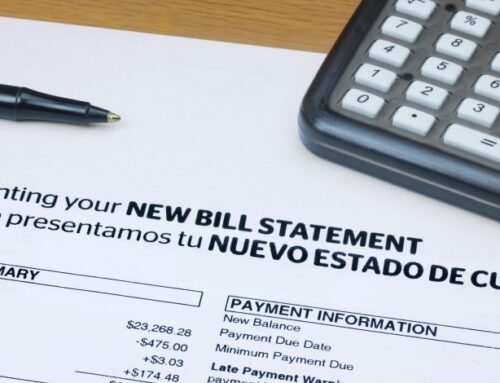A checking account is a type of bank account where you can easily deposit and withdraw money. Banks, credit unions and other financial institutions offer various checking accounts that come with different stipulations. Choosing a checking account that fits your needs is the foundation to reaching your financial goals.
Before you stop by your nearest financial institution to open a checking account, it’s important to conduct some research to find an account that fits your current financial situation and will help you reach your financial goals.
What Are The Different Types Of Checking Accounts?
There is no one-size-fits-all approach to checking accounts, which is one reason why financial institutions offer various types of checking accounts.
Here’s a list of the most common types of checking accounts you’ll find at almost every bank, credit union or other financial institution.
- Standard checking account: Just as the name suggests, this type of checking account doesn’t offer many fancy features. It is simply used to deposit and withdraw money. Standard checking accounts allow you to transfer funds, use a debit card, write and deposit checks, pay bills and view and manage accounts online. Most brick-and-mortar banks and credit unions offer standard checking accounts.
- Interest checking account: Unlike most checking accounts, an interest checking account allows you to earn monthly interest on the funds in the account. High-yield checking accounts may be more difficult to find, but community banks and credit unions generally offer them. However, credit unions tend to offer higher interest rates on checking accounts.
- Rewards checking account: This type of checking account provides basic features with additional benefits to incentivize customers to use them. The rewards may vary depending on the financial institution, but a reward account generally pays a higher APY than an interest rate checking account. Additionally, users of rewards checking accounts may receive preferred interest rates on new loans or discounts on fees such as overdraft protection.
- Cash-back checking account: A cash-back account is another type of checking account that helps your money work for you. Cash-back rules may vary depending on the financial institution, but some cash-back checking accounts allow you to receive 1% back on up to $3,000 in debit card purchases. That is $30 per month or $360 annually.
While this is not an exhaustive list of every type of checking account available on the market, it provides insight into some of the most common types of accounts. Understanding the differences can help you determine which account is the most suitable for your financial goals.
How To Choose The Best Checking Account For You
Determining which checking account is best for you will depend on a variety of factors. Let’s delve into some of the factors that should be considered when shopping for a checking account.
Fees
One of the biggest factors to consider when choosing a checking account is to look at the policy regarding fees. Even though the money in the account is yours, you may be subject to pay fees. Checking account fees can take form in a variety of ways. Some of the most common fees associated with checking accounts include:
- Monthly service fees: A monthly service fee is money the financial institution charges an individual for holding their money in an account. These fees are generally automatically withdrawn from the account every month. Depending on the financial institution you choose, monthly services are typically avoidable through various means such as maintaining a minimum checking balance or enrolling in direct deposits.
- Overdraft fees: An overdraft fee may occur when a payment is authorized, but sufficient funds are not available in the account to fully pay for the transaction. Rather than declining the payment, your financial institution may pay for the transaction and charge you a fee. According to the 2021 Checking Account Survey conducted by Bankrate, overdraft fees rose for a third straight year to an average of $33.58—a 22-cent increase from the previous two years. Certain banks or credit unions may offer overdraft transfers that allow you to link your checking account to another account, generally a savings account, to cover any overdrafts. However, you may still be charged with overdraft protection depending on the financial institution. It may be worth shopping around to find an account that offers this feature for free.
- Out-of-network ATM Fees: Most banks and credit unions have free ATM networks. However, some may charge you for using an ATM outside of their network, and the ATM may also charge you a fee. If you believe you’ll be using an out-of-network ATM frequently, you may want to find an account that offers no ATM fees or an account that is part of a CO-OP Shared Branching Network.
- Foreign transaction fees: If you plan to use your debit card abroad, you may want to find a checking account that doesn’t charge foreign transaction fees.
Online or in-person banking
When choosing the best checking account for you, convenience should be an important factor. Opting for an online financial institution such as Discover Bank or Ally can be great for individuals who don’t live near a bank or credit union. Online financial institutions may offer lower rates than a brick-and-mortar bank or credit union.
Brick-and-mortar banks or credit unions are great for individuals who like the full-service banking experience. If you choose to go with a brick-and-mortar financial institution for your checking account, you should ensure there are branches and ATMs near your home or office.
Insurance
When shopping around for a checking account, you should verify that the financial institution provides insurance from the Federal Deposit Insurance Corporation (FDIC) or National Credit Union Administration (NCUA).
The FDIC and NCUA provide insurance amount up to $250,000 per depositor, per institution, per ownership category. If the financial institution fails, this insurance protects and reimburses you the amount in the account.
Account balance
A recent Consumer Banking Study conducted by ValuePenguin found that the median checking account balance in the United States is $3,400. While checking accounts aren’t generally designed to hold large sums of money, if you plan to keep a few thousand dollars or more in your checking account, you may want to consider a high-yield checking account or a money market account.
ValuePenguin states that the national average interest rate on interest checking accounts is 0.03%, and the national average for a money market account is 0.09%.
Are You Ready To Open A Checking Account?
Opening a checking account is the basic building block to reaching your financial goals. You should first understand the various types of accounts available. Then, choose one that fits your needs and will put you on the right path to financial success. You should also consider other factors such as fees, the type of bank you would prefer, insurance and account balance.
If you’re ready to open a checking account, consider Arizona Central Credit Union. We offer a standard checking account and a money market account with interest rates as high as 0.10% that pays dividends on the entire balance. Contact us today and learn how you can reach your financial goals.




